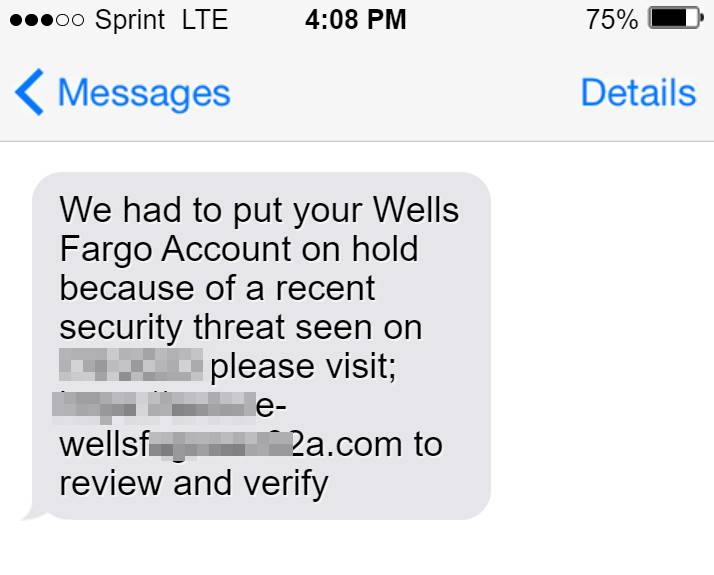If you have received a text message or email claiming to be from Wells Fargo and asking you to verify your account due to a security threat, you may be a target of a phishing scam. The Wells Fargo scam text below has a link to a phishing website that steals account credentials, personal, or financial information that will be used fraudulently. Therefore, recipients are asked not to click the link in the Wells Fargo scam text or follow the instructions in it.

What is the Wells Fargo Account On Hold Scam?
The Wells Fargo Account On Hold Scam is a type of phishing scam that uses fake text messages or emails to trick unsuspecting customers into revealing their sensitive information. The scammers pretend to be Wells Fargo and claim that there is a security threat on the customer’s account that requires immediate verification. The text message contains a link to a fake website that looks like the official Wells Fargo website, but is actually designed to capture the customer’s login details, personal information, or credit card information.
How does the Wells Fargo Account On Hold Scam work?
The scammers behind the Wells Fargo Account On Hold Scam use various techniques to send out mass text messages to random phone numbers or emails, hoping to reach some Wells Fargo customers. They may use spoofing technology to make the text messages appear as if they are coming from Wells Fargo’s official number, or they may use a similar-looking number that can easily be mistaken for the real one. The text messages usually have an urgent tone and create a sense of fear or panic in the recipients, who may feel compelled to click on the link and verify their account as soon as possible. However, once they do so, they are taken to a phishing website that asks them to enter their username, password, security questions, personal information, or credit card information. The scammers then collect this information and use it to access the customer’s real account, steal their money, make fraudulent purchases, or commit identity theft.
What to do if you have fallen victim?
If you have fallen victim to the Wells Fargo Account On Hold Scam, you should take immediate action to protect yourself and your account. Here are some steps you can take:
- Contact Wells Fargo as soon as possible and report the incident. You can call their customer service at 1-800-869-3557 or visit their website at https://www.wellsfargo.com/help/fraud/ for more information.
- Change your password and security questions for your Wells Fargo account and any other accounts that use the same credentials.
- Monitor your account activity and statements for any unauthorized transactions or changes. Report any suspicious activity to Wells Fargo and your credit card issuer.
- Check your credit reports for any signs of identity theft. You can get a free copy of your credit report from each of the three major credit bureaus (Equifax, Experian, and TransUnion) once a year at https://www.annualcreditreport.com/. If you find any errors or fraudulent accounts, dispute them with the credit bureaus and place a fraud alert on your credit file.
- Be more vigilant and cautious when receiving text messages or emails from unknown senders or claiming to be from your bank or other institutions. Do not click on any links or attachments, and do not provide any personal or financial information unless you are sure of the sender’s identity and legitimacy.
- If you suspect your device is infected with malware, run a free scan with Malwarebytes Anti-Malware.
Conclusion
The Wells Fargo Account On Hold Scam is a phishing scam that uses fake text messages to lure customers into giving away their sensitive information. The scammers then use this information to access their accounts, steal their money, or commit identity theft. To avoid falling victim to this scam, customers should ignore and delete any suspicious text messages, and contact Wells Fargo directly if they have any doubts or concerns about their account security.










